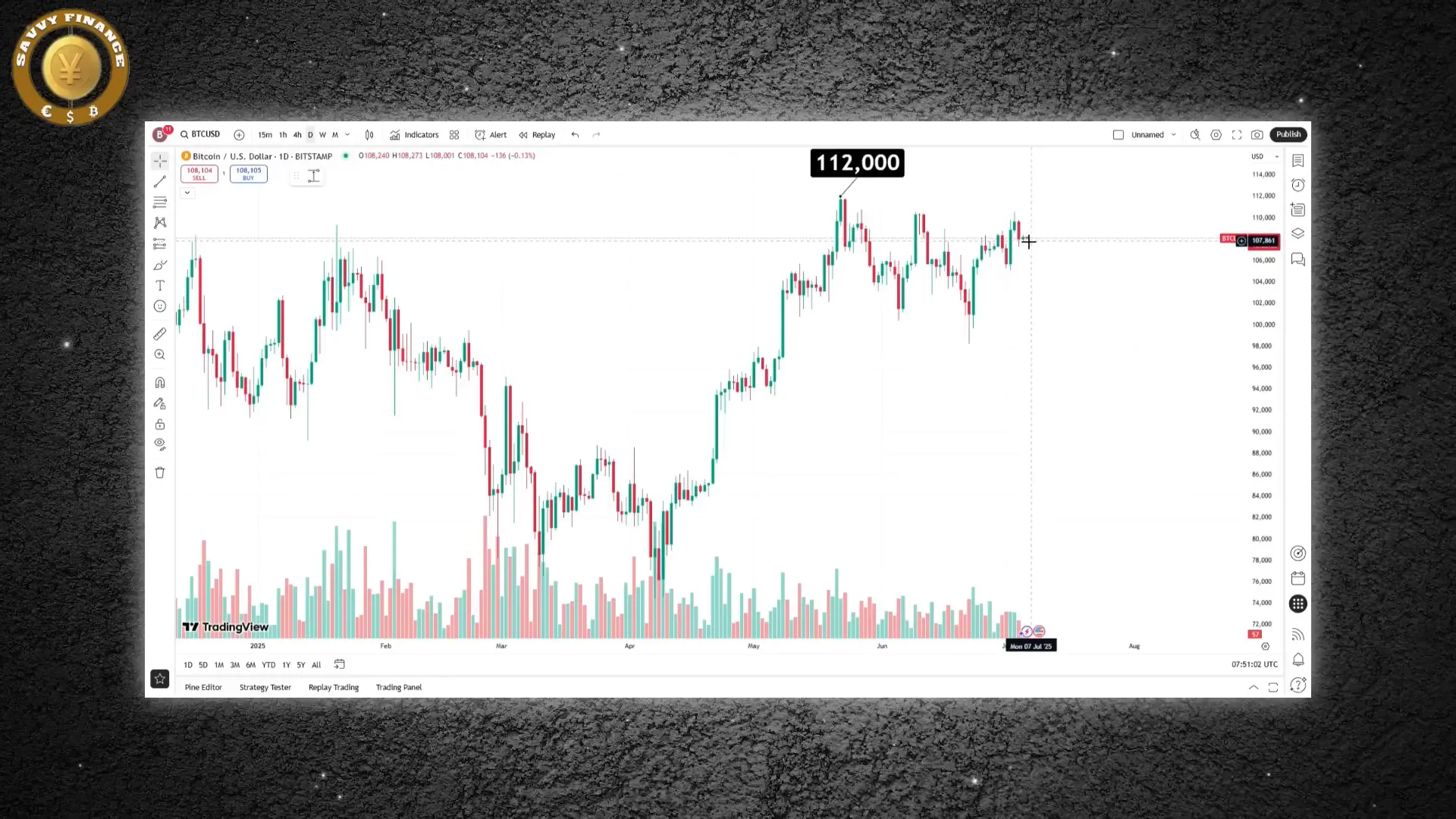
In the rapidly evolving world of digital assets, the question on every investor’s mind is: How do I gain meaningful exposure to cryptocurrency without taking on excessive risk? Traditional finance veterans and crypto insiders alike are converging on one compelling answer — diversified index investing. This approach, championed by experts such as Matt Hougan, Chief Investment Officer at Bitwise, is poised to reshape how both retail and institutional investors engage with the crypto market.
Let’s explore why owning a basket of cryptocurrencies, rather than betting on a single coin, could be the smartest way to navigate the crypto landscape today, and how regulatory developments and innovative ETF structures are accelerating this trend.
Table of Contents
- The Case for Crypto Index Strategies
- Bitcoin’s Resilience and Market Sentiment
- Regulatory Developments and ETF Innovations
- Why Traditional Investors Prefer Index Funds
- The Future: Tokenized ETFs and Hybrid Models
- Normalization of Crypto as Collateral in Traditional Finance
- Looking Ahead: Market Efficiency and Opportunities
- Stablecoin and Crypto Legislation Outlook
- Conclusion: Diversification Is Key in the Crypto Era
The Case for Crypto Index Strategies
When you look at traditional financial markets, the largest and most successful funds are almost always index funds. The S&P 500 in equities and AG in bonds are prime examples — they provide broad market exposure, reduce risk, and don’t require investors to pick winners and losers.
This principle applies equally to cryptocurrency. Most traditional investors, including those managing billions, prefer to avoid the complexity and uncertainty of selecting the “next big coin.” Even dedicated crypto professionals, who live and breathe the market 24/7, admit they can’t confidently predict which Layer 1 blockchain will dominate in the future.
“I’d rather just own them all,” says Hougan. This sentiment is driving the rise of crypto index funds — diversified products that spread risk and provide exposure to the entire crypto ecosystem without needing deep technical knowledge.
Hougan predicts that crypto index strategies could grow into a $100 billion-plus Exchange Traded Product (ETP) market, potentially becoming the largest within crypto after Bitcoin itself.
Bitcoin’s Resilience and Market Sentiment
Bitcoin continues to hold strong around $108,000, following a record-breaking monthly close in June. It’s currently testing resistance near $108,100, and analysts are eyeing a potential breakout to $115,000. While some caution about possible dips to $105,000 or even $102,000, the overall market sentiment remains bullish.
Big investors are still accumulating, seasonal trends support upward momentum, and technical charts hint that a significant move may be on the horizon.
Yet, while Bitcoin steals headlines, many insiders believe the real opportunity lies not in picking the next hot coin but in owning the entire market through index-style investing.

Regulatory Developments and ETF Innovations
One exciting development fueling crypto’s growth is the increasing likelihood of Solana and XRP ETFs being approved by regulators, possibly as soon as July. However, the approval timeline depends on the regulatory framework chosen for these ETFs.
Most crypto ETFs today follow the traditional Securities Act of 1933 structure, which involves a longer review process, typically around 240 days. However, there is a less common but clever alternative under the Investment Company Act of 1940, where ETFs are structured as C corporations holding the underlying assets. This path offers an accelerated review period of approximately 75 days, allowing quicker market entry unless the SEC intervenes.
For example, the Rex ETF pursued this C corp approach, potentially speeding up its launch. While it’s not guaranteed, this innovative packaging highlights how the ETF landscape is evolving to better accommodate crypto products.

Why Traditional Investors Prefer Index Funds
In traditional markets, index funds dominate because they provide broad, diversified exposure while minimizing idiosyncratic risks. The same logic is now shaping crypto investing. Most investors want “all the pillows in your background” — meaning they want exposure to the entire crypto market rather than picking individual winners.
Even crypto insiders admit they lack full confidence in predicting the dominant blockchain of the future. This uncertainty makes index strategies more attractive and practical.
Hougan highlights Bitwise’s ETF ticker OWNB (“Own Bitcoin”), which holds companies with significant Bitcoin treasury holdings, including Tesla and others with at least 1,000 BTC on their balance sheets. This ETF allows investors to capture Bitcoin’s upside indirectly, spreading risk across multiple entities instead of relying on a single company’s fortunes.
As treasury strategies expand to include Ethereum, Solana, XRP, and other assets, Hougan believes index funds will become even more critical in providing diversified crypto exposure.

The Future: Tokenized ETFs and Hybrid Models
The next frontier in crypto investing could be tokenized ETFs — digital, programmable baskets of assets that function like traditional ETFs but operate on blockchain technology. These could be auto-executing decentralized finance (DeFi) contracts that dynamically manage and rebalance portfolios.
Such innovations would allow investors to express thematic views more efficiently and could combine public and private assets, including tokenized stocks and private company exposures.
Hybrid models blending tokenized assets with traditional equities could unlock new opportunities for investors seeking exposure to emerging sectors and private markets, all within regulated frameworks.

Normalization of Crypto as Collateral in Traditional Finance
For the past 15 years, traditional finance largely valued crypto assets as zero when it came to collateral for loans like mortgages. The reasoning was simple: crypto was seen as too risky and volatile, so it was excluded from collateral calculations despite being liquid and high-quality collateral.
This forced many crypto holders who wanted to buy homes to sell their crypto holdings, increasing selling pressure in the market.
Recently, a significant shift has occurred. The Federal Housing Finance Agency (FHFA) and other authorities now recognize crypto held on regulated U.S. exchanges as valuable collateral for mortgages. This signals a major step toward the normalization of cryptocurrency as a financial asset akin to stocks or bonds.
“This isn’t going to go to zero tomorrow,” Hougan emphasizes. This acceptance opens the door for borrowers to leverage their crypto holdings without liquidating them, reducing market sell-offs and adding stability.
Looking Ahead: Market Efficiency and Opportunities
The integration of crypto into traditional finance is part of a broader evolution toward 24/7 global trading with instantaneous settlement. Although the transition may introduce short-term inefficiencies and alpha opportunities, the end result will be a more efficient and accessible capital market.
Hougan draws parallels to past market transitions, such as the shift from floor trading at the New York Stock Exchange to electronic trading. Despite initial skepticism and risks, these changes ultimately benefited investors and markets alike.
Similarly, the rise of tokenized stocks and crypto ETFs will accelerate, driven by technological innovation and regulatory progress. The market is moving faster than many expect, with recent announcements from players like Robinhood expanding tokenized stock offerings globally.

Stablecoin and Crypto Legislation Outlook
On the legislative front, there is growing optimism about stablecoin regulation passing this year. Stablecoins have garnered bipartisan support, with Senate votes reaching unprecedented margins.
While comprehensive crypto market structure reforms like the Clarity Act may take longer, there is a strong likelihood of progress by year-end. The direction is clear: a better, regulated financial market built on crypto rails is on the horizon.
Conclusion: Diversification Is Key in the Crypto Era
As the cryptocurrency market matures, the compelling case for diversified index investing grows stronger. Whether through traditional ETFs, tokenized baskets, or hybrid models combining public and private assets, spreading risk and gaining broad exposure is emerging as the smart strategy for both traditional and crypto-native investors.
Bitcoin continues to be a dominant force, but owning the entire crypto market through index funds offers a practical, less risky way to participate in the digital asset revolution.
With regulatory clarity improving and innovative ETF structures accelerating product launches, the future of crypto investing looks diversified, accessible, and promising.
Are you more inclined to invest in a single cryptocurrency like Bitcoin, or do you prefer a diversified index approach? Share your thoughts below — the conversation is just getting started.
Why Diversified Cryptocurrency and Bitcoin Index Investing Is the Future. There are any Why Diversified Cryptocurrency and Bitcoin Index Investing Is the Future in here.
